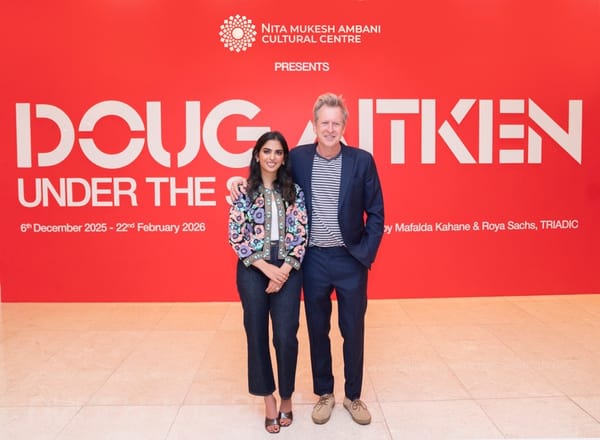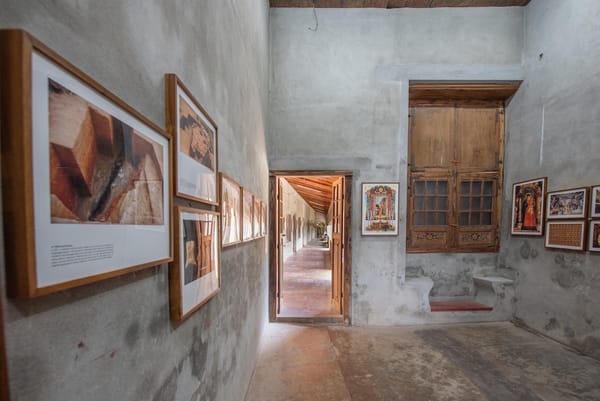Innovative Approaches to Teaching Art in Schools
As schools rethink creativity, new approaches to art education are emerging — from STEAM learning and digital media to mindfulness and process-based methods, empowering students to express, reflect, and connect through visual language.

In an age where creativity is increasingly prized as a key 21st-century skill, the way we teach art in schools is undergoing a quiet yet powerful transformation. No longer relegated to the margins of the curriculum or confined to still-life sketches and paint-by-numbers, art education today is being reimagined by educators, artists, and policymakers across the globe. These innovations are not only about technique or medium but also about pedagogy, inclusivity, cross-disciplinarity, and the development of visual literacy in a rapidly shifting world.
From Product to Process
Traditional art instruction has often prioritised the end product – a finished painting, a sculpted object, or a well-executed drawing – over the artistic journey itself. However, a growing number of schools are now shifting towards process-based learning. This approach encourages students to engage deeply with materials, explore creative possibilities, and embrace mistakes as part of the learning curve.
Instead of asking “What have you made?”, teachers are asking, “What did you discover?” Process-based learning fosters reflection, problem-solving, and emotional resilience. It empowers students to take creative risks and to see art-making not as a rigid task but as an evolving practice.
Integrating Contemporary Practices
Modern art classrooms are beginning to look more like contemporary studios than 19th-century ateliers. Photography, video art, digital illustration, installation, and performance are finding their way into lesson plans, allowing students to respond to their world with contemporary tools. Importantly, this shift legitimises students’ existing visual languages, especially in an era saturated with social media and digital content.
Teachers are drawing on artists such as Yayoi Kusama, El Anatsui, and Olafur Eliasson to discuss themes of identity, environmentalism, and social change. This fosters a richer understanding of art as a medium for personal and political expression, not just as a decorative or technical skill.
STEAM Over STEM
The acronym STEM – Science, Technology, Engineering and Mathematics – has dominated educational discourse for years. But recently, many schools have embraced the expanded acronym STEAM, adding “A” for “Arts” to underline the vital role of creativity in innovation.
Art is no longer siloed from other disciplines. In STEAM-based projects, students might create kinetic sculptures to explore physics, use data visualisation to map climate change, or design eco-conscious buildings in collaboration with engineers. This not only strengthens their understanding of each subject but demonstrates how art can function as a bridge rather than a boundary between fields.
Culturally Responsive Art Education
Another important development is the turn towards culturally responsive pedagogy. In diverse classrooms, it is increasingly crucial that students see their cultures, histories, and traditions reflected in the curriculum. Art is uniquely positioned to serve this goal.
Schools are now including folk and indigenous art forms – from Gond and Warli in India to Aboriginal dot painting and Mexican papel picado – in their syllabi. Rather than treating these as curiosities, educators are encouraging students to explore the philosophies and worldviews embedded within these practices. This shift fosters empathy, self-awareness, and a more expansive view of art history beyond the Euro-American canon.
Artist Residencies in Schools
Bringing professional artists into the classroom is another powerful way to enliven art education. Artist-in-residence programmes, once limited to universities and galleries, are now being introduced in primary and secondary schools.
These residencies offer students a chance to see how artists think and work in real time. Moreover, they create opportunities for mentorship, experimentation, and dialogue that go beyond the confines of the syllabus. In some schools, residencies culminate in student-led exhibitions or collaborative public artworks, giving students a tangible sense of contribution and pride.
Emphasis on Visual Literacy
In today’s image-saturated world, teaching students to critically read and interpret visual material is as vital as teaching them to read and write. Visual literacy – the ability to decode images, symbols, and spatial relationships – is now gaining prominence as a foundational skill.
This includes analysing advertising, social media, political cartoons, and even emojis. By learning how visual information is constructed and manipulated, students become more discerning consumers and creators of visual culture. They begin to understand how images can persuade, deceive, inspire, or provoke, which is an essential skill in the digital age.
Mindfulness and Art Therapy in the Classroom
Art’s ability to soothe, centre, and heal is increasingly being recognised within the framework of school wellbeing initiatives. Educators are incorporating mindfulness techniques such as mandala drawing, slow looking, and reflective journaling into art lessons to help students manage stress and anxiety.
Some schools have even collaborated with art therapists to design programmes for students with emotional or behavioural challenges. These initiatives affirm that art is not only a tool for expression but a space for emotional processing and self-care.
Project-Based and Collaborative Learning
Contemporary art is often collaborative, interactive, and socially engaged, and these values are finding their way into the classroom. Rather than working in isolation, students are now encouraged to collaborate on large-scale projects, from murals and zines to community installations and pop-up exhibitions.
This model mimics the dynamics of the professional art world and fosters essential skills such as communication, negotiation, teamwork, and leadership. Moreover, it allows students to address real-world issues such as climate change, inequality, and urbanisation through collective artistic inquiry.
Technology in the Art Room
Far from being a threat to traditional mediums, technology has become a powerful ally in the art classroom. Tablets, styluses, and apps like Procreate or Adobe Fresco are now common tools, helping students merge hand-drawing with digital techniques. Virtual reality, augmented reality, and 3D printing are also beginning to open up new dimensions for artistic exploration.
Online platforms allow students to curate digital portfolios, exhibit their work virtually, and even collaborate with peers across the globe. In a post-pandemic world, this hybrid approach that blends digital and physical experiences is likely to become the new norm.
Assessing Creativity Differently
Finally, one of the most significant challenges in art education has always been assessment. How does one “mark” creativity? Innovative schools are moving away from grading based solely on final output or technique. Instead, rubrics now include criteria such as originality, conceptual thinking, risk-taking, and reflection.
Students may be asked to write artist statements, keep process journals, or engage in peer critiques, all of which encourage metacognition and self-evaluation. These forms of assessment honour the subjective, exploratory, and sometimes messy nature of the artistic process.
Conclusion
The landscape of art education is undergoing an exciting transformation. As schools embrace innovation, art is increasingly seen not as a luxury or an extracurricular indulgence, but as a core component of a well-rounded education. Through new pedagogies, expanded media, and inclusive practices, today’s art classrooms are nurturing not just future artists, but empathetic, curious, and creative citizens.





